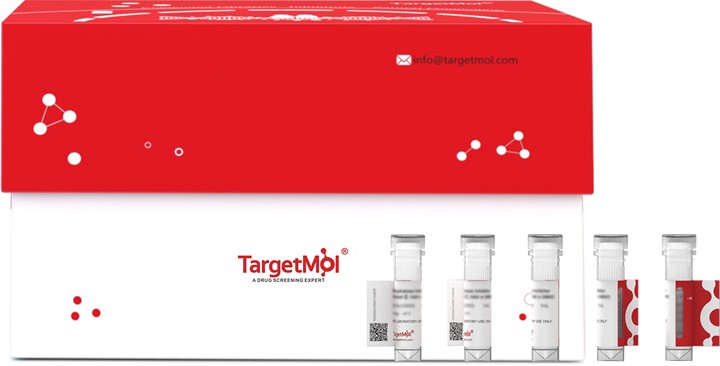 Your shopping cart is currently empty
Your shopping cart is currently empty
AMIGO2 Protein, Human, Recombinant (hFc)
Amphoterin-Induced Protein 2 (AMIGO2) is a single-pass type I membrane protein which belongs to the AMIGO family of immunoglobulin superfamily. Mature AMIGO2 contains an Ig-like C2-type (immunoglobulin-like) domain, 6 LRR (leucine-rich) repeats, a LRRCT domain, as well as a LRRNT domain. AMIGO2 is mainly expressed in in breast, ovary, cervix, and uterus, although lower in lung, colon, and rectum. AMIGO2 required for depolarization-dependent survival of cultured cerebellar granule neurons. AMIGO2 may mediate homophilic as well as heterophilic cell-cell interaction with AMIGO1 or AMIGO3. AMIGO2 may contribute to signal transduction through its intracellular domain, and may be required for tumorigenesis of a subset of gastric adenocarcinomas.

AMIGO2 Protein, Human, Recombinant (hFc)
| Pack Size | Price | USA Warehouse | Global Warehouse | Quantity |
|---|---|---|---|---|
| 5 μg | $115 | 7-10 days | 7-10 days | |
| 10 μg | $189 | 7-10 days | 7-10 days | |
| 20 μg | $296 | 7-10 days | 7-10 days | |
| 50 μg | $570 | 7-10 days | 7-10 days | |
| 100 μg | $828 | 7-10 days | 7-10 days | |
| 200 μg | $1,190 | 7-10 days | 7-10 days | |
| 500 μg | $2,000 | 7-10 days | 7-10 days | |
| 1 mg | $2,800 | 7-10 days | 7-10 days |
Product Information
| Biological Activity | Activity has not been tested. It is theoretically active, but we cannot guarantee it. If you require protein activity, we recommend choosing the eukaryotic expression version first. |
| Description | Amphoterin-Induced Protein 2 (AMIGO2) is a single-pass type I membrane protein which belongs to the AMIGO family of immunoglobulin superfamily. Mature AMIGO2 contains an Ig-like C2-type (immunoglobulin-like) domain, 6 LRR (leucine-rich) repeats, a LRRCT domain, as well as a LRRNT domain. AMIGO2 is mainly expressed in in breast, ovary, cervix, and uterus, although lower in lung, colon, and rectum. AMIGO2 required for depolarization-dependent survival of cultured cerebellar granule neurons. AMIGO2 may mediate homophilic as well as heterophilic cell-cell interaction with AMIGO1 or AMIGO3. AMIGO2 may contribute to signal transduction through its intracellular domain, and may be required for tumorigenesis of a subset of gastric adenocarcinomas. |
| Species | Human |
| Expression System | HEK293 Cells |
| Tag | C-hFc |
| Accession Number | Q86SJ2 |
| Synonyms | Differentially Expressed in Gastric Adenocarcinomas,DEGA,Amphoterin-Induced Protein 2,AMIGO-2,AMIGO2,Alivin-1,ALI1 |
| Amino Acid | Gly39-His393 |
| Construction | Gly39-His393 |
| Protein Purity | Greater than 95% as determined by reducing SDS-PAGE. (QC verified) |
| Molecular Weight | 93 KDa (reducing condition) |
| Endotoxin | < 0.1 ng/µg (1 EU/µg) as determined by LAL test. |
| Formulation | Lyophilized from a solution filtered through a 0.22 μm filter, containing PBS, pH 7.4. |
| Reconstitution | Reconstitute the lyophilized protein in distilled water. The product concentration should not be less than 100 μg/ml. Before opening, centrifuge the tube to collect powder at the bottom. After adding the reconstitution buffer, avoid vortexing or pipetting for mixing. |
| Stability & Storage | Lyophilized powders can be stably stored for over 12 months, while liquid products can be stored for 6-12 months at -80°C. For reconstituted protein solutions, the solution can be stored at -20°C to -80°C for at least 3 months. Please avoid multiple freeze-thaw cycles and store products in aliquots. |
| Shipping | In general, Lyophilized powders are shipping with blue ice. Solutions are shipping with dry ice. |
| Research Background | Amphoterin-Induced Protein 2 (AMIGO2) is a single-pass type I membrane protein which belongs to the AMIGO family of immunoglobulin superfamily. Mature AMIGO2 contains an Ig-like C2-type (immunoglobulin-like) domain, 6 LRR (leucine-rich) repeats, a LRRCT domain, as well as a LRRNT domain. AMIGO2 is mainly expressed in in breast, ovary, cervix, and uterus, although lower in lung, colon, and rectum. AMIGO2 required for depolarization-dependent survival of cultured cerebellar granule neurons. AMIGO2 may mediate homophilic as well as heterophilic cell-cell interaction with AMIGO1 or AMIGO3. AMIGO2 may contribute to signal transduction through its intracellular domain, and may be required for tumorigenesis of a subset of gastric adenocarcinomas. |
Dose Conversion
Calculator
Tech Support
| Size | Quantity | Unit Price | Amount | Operation |
|---|

Copyright © 2015-2025 TargetMol Chemicals Inc. All Rights Reserved.



